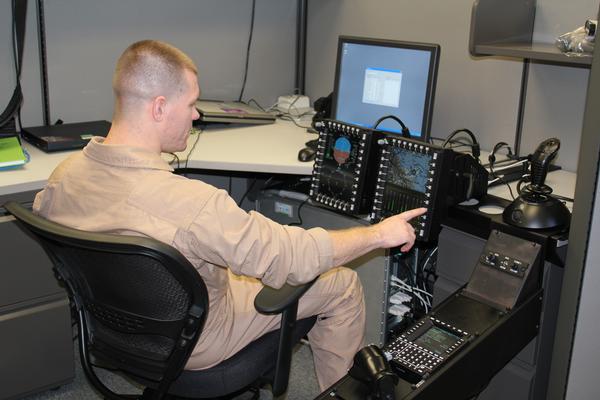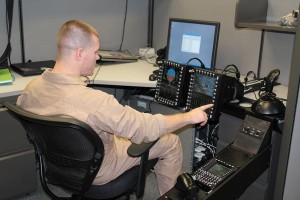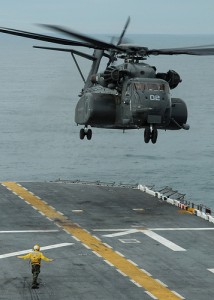Driving Dragons on a Desk


Staff Sgt. Eric Fraley, with Air Test and Evaluation Squadron HX-21, located at Naval Air Station Patuxent River, switches between the various multi-function displays on the new MH-53E desktop trainer. (U.S. Navy photo)
The line between official military training simulators and desktop computer game simulations just blurred a little more.
The Naval Aviation Training Systems program office (PMA-205) announced last week that its has developed a portable, desktop trainer, or DTT, to assist MH-53E Sea Dragon helicopter pilots with navigation, communication and surveillance/air traffic management training.
The trainer is at the beginning of a naval aviation trend toward having DTTs for aircraft with glass cockpits, according to Rick Anderson, head of PMA-205’s H-53 training integrated courseware products team.
“The relatively inexpensive trainers will save the Navy money, free up aircraft for missions and live training, and dramatically improve pilots’ familiarity with the controls critical to effectively fly the upgraded MH-53E,” said Capt. John Feeney, Naval Aviation Training Systems program manager, in a prepared statement.
The part-task DTT simulates some of the components of a glass cockpit, which is characterized by digital computer technology using multi-function displays, as opposed to the legacy analog or steam gauge cockpits with dedicated analog dials, according to Anderson.

An MH-53E Sea Dragon helicopter prepares to land aboard the amphibious assault ship USS Iwo Jima. (U.S. Navy photo)
Like an actual glass cockpit, the DTT features digital instrument displays and liquid
crystal display screens. The displays provide data to the pilot, displayed in many configurations, including the aircraft flight and navigation performance instrumentation; engine, hydraulic and systems instrumentation; navigation route; moving map; instrument approach; or airport information. The student can easily move from one page of the display to another simply by pushing a button as a situation changes.
“Pilots need to be intimately familiar with their [displays],” said Anderson, “which is why the DTT is so important and useful. Time is critical when you’re flying an aircraft.”
Air Test and Evaluation Squadron HX-21, located at Naval Air Station Patuxent River, began evaluating the trainer in April 2011. Anderson said once it’s been thoroughly evaluated it will be sent to the Airborne Mine Countermeasures Weapon Systems Training School at Naval Air Station Oceana, Va.
The second trainer will be expanded to provide troubleshooting training for maintainers. Once those modifications are complete, it will be sent to the Center for Naval Aviation Tactical Training in Norfolk as an interim maintenance trainer.
As improvements are identified prior to the delivery of the first upgraded Sea Dragon to the fleet, the trainers will be modified to match the aircraft configuration.
The Sea Dragon is used primarily for airborne mine countermeasures.
Source: AIR-1.0 Public Affairs























